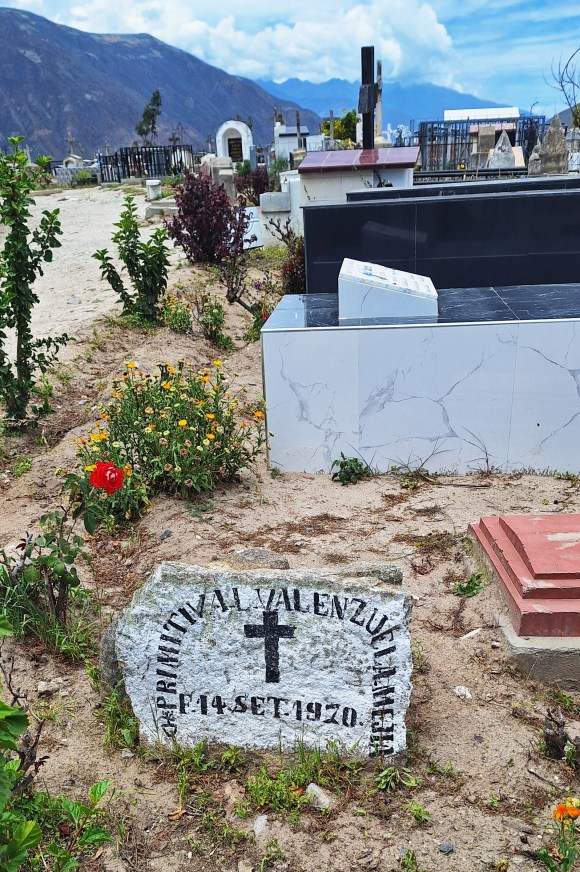Hola from Yungay in the Cordillera Blanca,
Imagine raising a family, honestly toiling away, contributing selflessly to your community, complying uncomplainingly with all laws and regulations of your society. Imagine looking up every morning, in any season, seeing two magnificent snow-capped peaks of the Andes, and knowing that you were living a comparatively lucky existence. Imagine feeling that life had been fairly kind to you but that you were justified in the thought that you had earned the good fortune.



Prior to 1970, the people of Yungay may well have been in this position. The urban settlement of Yungay was built as a service centre for the agricultural area of what is known here as the Huaylas. This is the verdant valley between the Cordillera Blanca (where the mountains are covered in snow) and the Cordillera Negro (where the mountains have no snow atop them).
On 31 May, 1970. it came to a sudden and violent end. In mid-afternoon of that winter’s day, an earthquake (terremoto) shook the Cordillera Blanca. The same faulting process that created the mighty Andes range occasionally causes earthquakes and tremors in the fault line. (There is news of a tremor somewhere in Peru almost every day.) It was not the terremoto that did the damage that day.
The movement caused an avalanche (avalancha) and millions of tonnes of snow were dislodged on the mountain and headed downwards, straight for the township of Yungay. The results were utter devastation. Reliable estimates say that 25 000 local residents died in the crush. A small number of people scurried to higher ground, including where this impressive cemetery stood on the hill, and still stands today. The stories of survival from this disaster are legion in Peru today.

The town was obliterated, buried beneath the rock, scree and snow. The township remains buried today. Some of the wreckage is preserved as commemoration of the disaster.

New Yungay is being built north and south of the site, on higher ground (proving the need for the service centre). One of the first things erected afterwards? A cross and facade of a church! Que?



Were the 25 000 people who perished all shocking sinners who deserved their premature deaths? Was God watching lovingly over them on 31 May, 1970? Or, did the earthquake also shake the religious resolve of the survivors? Perhaps, it’s a case of an authority arranging for symbolic expenditure at odds with the majority? It would not be the first time.
Adios from Yungay
Gregorio
